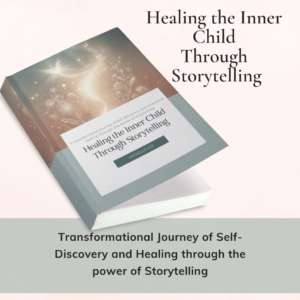
Have you ever looked in the mirror—not to fix your hair or check your outfit—but to truly see yourself?
In a world full of distractions, noise, and unrealistic expectations, the Mirror Technique invites you to pause, reflect, and connect with the person staring back at you. Backed by psychological theory and neuroscience, this daily practice helps quiet the external world so you can finally hear your inner truth.
| Science | Research | Benefits |
|---|---|---|
| Mirror gazing activates brain regions associated with self-awareness, including the medial prefrontal cortex, enhancing emotional regulation and self-reflection. | Neuroscience studies reveal that mirror gazing fosters emotional resilience and self-compassion by enabling individuals to confront their emotions directly. | Improves emotional well-being, reduces stress, and strengthens self-compassion. |
| Mirror work promotes self-perception shifts through neuroplasticity, allowing individuals to reframe negative beliefs and enhance self-esteem. | Research demonstrates that mirror work can transform self-perception, reduce anxiety, and align personal goals with authentic values. | Boosts self-esteem, fosters self-love, and reduces anxiety by cultivating positive self-dialogue. |
| Mirroring in therapy facilitates objective self-assessment, enabling individuals to recognize limitations and develop problem-solving skills. | Studies on therapeutic mirroring show its effectiveness in enhancing interpersonal communication and enabling emotional expressiveness. | Encourages realistic self-appraisal, improves communication skills, and promotes emotional healing. |
| Confronting one’s reflection activates social-emotional processing systems, similar to face-to-face interactions, aiding empathy development. | Research highlights that mirror gazing enhances empathy by mimicking the social cues observed in interpersonal interactions. | Strengthens relationships, improves empathy, and enhances social skills. |
| Mirror exposure increases mindfulness by focusing attention on the present moment and reducing rumination. | Evidence suggests that mirror meditation fosters mindfulness, helping individuals manage stress and improve focus. | Cultivates inner peace, reduces overthinking, and enhances mental clarity. |
Let’s explore how this simple yet powerful technique can help you rediscover the real you.
🧠 What Is the Mirror Technique?
The Mirror Technique involves standing in front of a mirror, making eye contact with yourself, and engaging in intentional self-connection—whether through affirmations, silent observation, or reflective dialogue.
This practice may seem simple, but it’s a deeply healing and research-supported way to build self-awareness, emotional resilience, and a more loving relationship with yourself.
“When we look into the mirror, we aren’t just seeing a reflection. We’re seeing years of conditioning, self-beliefs, and unspoken feelings. Meeting your own gaze breaks that illusion.” — Mirror work philosophy
🔬 The Psychology Behind Mirror Work
The power of this practice lies in its roots. French psychoanalyst Jacques Lacan proposed the “mirror stage” as a critical moment in forming identity. This foundation has evolved into therapeutic techniques such as mirror work—most famously promoted by Louise Hay to build self-love and heal emotional wounds (Centre of Excellence).
Today, mirror gazing is more than just spiritual—it’s scientific.
Research from Frontiers in Human Neuroscience shows that looking at your own reflection activates parts of the brain tied to self-recognition, empathy, and emotional regulation (PMC Study).
In another study, mirror exposure helped individuals with social phobia generate more positive self-statements and reduced anxiety (PMC Mirror Study).
🌿 What Are the Benefits of the Mirror Technique?
Practicing the Mirror Technique daily can positively impact both your inner world and outer relationships.
✨ Emotional & Psychological Benefits:
- Boosts Self-Awareness: You become more conscious of your emotional patterns, self-talk, and triggers.
- Improves Self-Compassion: Speaking to yourself with kindness in the mirror quiets your inner critic.
- Increases Confidence: Repeated positive affirmations help rewire negative self-perceptions.
- Promotes Emotional Regulation: Grounding yourself visually and emotionally can reduce anxiety and stress.
- Reinforces Identity: Spending time face-to-face with yourself fosters a sense of personal clarity.
According to Mindful.org, mirror gazing can “connect you with who you are beneath the roles and judgments you wear daily.”
💡 How to Get Started: Your Daily Mirror Practice
Here’s a gentle, research-backed routine to begin:
- Find a Quiet Space:
Use a mirror in a peaceful setting. Stand or sit comfortably. - Set an Intention:
Choose a theme: self-love, clarity, forgiveness, or simply being present. - Make Eye Contact:
Gaze into your own eyes—not in judgment, but in curiosity. Breathe slowly. - Speak or Observe:
Say a calming affirmation like “I am enough” or “I see you.” Or simply watch your thoughts and emotions arise and pass. - Acknowledge Feelings:
Tears, discomfort, resistance—it’s all okay. Let it come and go without trying to fix it. - End with Gratitude:
Finish by saying something kind to yourself, even if it’s simple: “I’m proud of you for showing up today.”
🧩 5 Common Questions About the Mirror Technique
1. What if I feel uncomfortable looking at myself?
That’s normal. Discomfort is part of the healing process. Start small—just 1–2 minutes a day—and be gentle with yourself.
2. Do I have to say affirmations out loud?
No. You can think or write them silently. However, hearing your voice adds emotional impact.
3. Is this backed by science or just self-help fluff?
Scientific studies support mirror exposure therapy for emotional healing and anxiety reduction (PMC Study).
4. How long before I feel results?
Some feel a shift after one session. For deeper emotional rewiring, aim for consistent daily practice for 30 days.
5. Can I combine this with other healing tools?
Absolutely. Mirror work complements journaling, therapy, meditation, and breathwork beautifully.
🪞 Final Thoughts: You Are Worth Facing
In a world that constantly pulls your attention outward, the Mirror Technique calls you back home—to yourself. It’s a daily act of courage to face your reflection with love, not judgment.
And in that brave moment, healing begins.
✅ Call to Action
💬 Today, take two minutes. Look into your own eyes. Say, “I’m listening.”


Leave a Reply